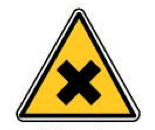Use of styrene in sewer works. Mistrust
 The recent use of a chemical — styrene — in a sewer lining process by the company Vivaqua (on behalf of Hydrobru, the Brussels water intermunicipal company) led me to take an interest in this product.
The recent use of a chemical — styrene — in a sewer lining process by the company Vivaqua (on behalf of Hydrobru, the Brussels water intermunicipal company) led me to take an interest in this product.
Side effects observed in local residents
An "incident" indeed took place during use over a period of several days in a municipality in Brussels (Etterbeek). Many of the residents had side effects on their health: headaches, throat or eye irritation, drowsiness. In fact, the process used outside (in the street) seeps into the house via the sewers. The smell at first, surprising but not unpleasant, becomes over the persistence (several days) disabling, and causes these side effects. Readings taken in homes 3 hours after the stoppage of work revealed a rate of 5 to 20 ppm (*) in some houses.
Reaction of the industrialist and the municipality: Ostrich syndrome
Hydrobru/Vivaqua denies any harmful effects. "an unpleasant odor (emanating from the polyester used to line the sewer) may appear during this work", adding "it is in no way harmful". While the municipality disclaims all responsibility: "these odors are not the result of any chemical pollution. They are exclusively linked to the nature of the materials used to repair the sewer, are not dangerous and will disappear as the work progresses" (read here). For the chief of staff of the mayor, Vincent De Wolf (liberal), just like the elected official, everything is normal and without any danger. The elected environmentalist Rik Jellema even considers that it is "for the good" of the inhabitants! Nb: none however risked moving on the spot despite the presence of the police, firefighters and the IBGE). In terms of crisis management, the city of Etterbeek like Vivaqua still seems to be in prehistory.
An incomplete table
The picture drawn up by the authorities is, in fact, largely incomplete, even bordering on a lie by omission. Styrene is, in fact, a product classified as "harmful" according to EC regulations according to 4 risk factors: "R 10 - Flammable. R 20 - Harmful by inhalation. R 36/38 - Irritating to eyes and skin. S 23 - Do not breathe gas/fumes, vapors, spray". And the employer who uses it is subject to the European and national regulations in force, particularly in terms of health protection, worker information and medical monitoring.
Side effects
The effects observed in people living near the work are fully described in the various "toxicological" sheets drawn up by the scientific institutes (see the INRS - Safety Research Institute sheet (French) or the international toxicology sheet below). ). Its long-term effects, on the other hand, have not yet been scientifically proven and discussed - in particular the carcinogenic effect (European regulations do not classify it, but the International Agency for Research on Cancer, an international organization close to the WHO, classifies it as "possibly carcinogenic to humans").
Lowered exposure threshold
The legislation in force for this product is, however, in the process of being reinforced. This under the effect of several scientific reports which establish certain health risks. Thus the exposure limit threshold is set at 50 ppm in France over 8 hours at a temperature of 20° (or 215 mg/m3) according to a circular of 1985 but a report from theNational Health Security Agency recommends setting it at around 100 mg/m3 or around 25 ppm. In Belgium, the Royal Decree of 2002 (last amended in 2011) took the lead and planned to gradually lower this limit: from 50 ppm in 2012, it is now 40 ppm in 2013 and 2014 and will increase to 25 ppm in 2015. In Germany and the USA, the first limit is already set at 20 ppm (86 mg/m3). NB: This lowering of the limits therefore reflects an awareness at the scientific level which does not yet seem to have reached the level of certain political leaders.
To behave In case of problem
In the short term, it is recommended:
- (if possible) get out of the contaminated area
- Ventilate as much as possible
- Since Styrene is a rather heavy gas which will remain at ground level, for semi-buried rooms, it is preferable to use an air extractor (industrial type, construction site type, failing that a bathroom air extractor). powerful baths).
- Consult a doctor to establish a report
- Take a urine sample, in any laboratory, With a request for measurement of: Mandelic acid and phenylglyoxylic acid
These samples will be grouped together for a complete examination in a specialized center (in Brussels, AZ).
In the medium and long term, it seems necessary to put in place a more important preventive policy:
- Installation of control sensors, permanently in nearby premises or homes
- Provision of an emergency number available 24 hours a day (possibly with a medical form). Nb: that of Vivaqua is a "decoy". It does not work 24 hours a day. While the site operates 24/24.
- Passage of an expert in the premises or dwellings to caulk or put precautionary devices
In the event of a problem being observed, it seems necessary
- Provision in "sensitive" dwellings of means of evacuation or treatment of contaminated air
- urinalysis study in locals
NB: all these measures "have a cost" as noted by Mayor De Wolf's cabinet. "You realize !" It can be noted that this cost is relatively low compared to that of the inconvenience caused.
(*) As the product is extremely volatile, this rate must have been much higher during daily exposure.
Learn More. You can download:
- the sheet INRS (France)
- the international toxicological data sheet (WHO/ILO/EC),
- the study Ineris (France)
- the report of theAnses (France)
- Royal decree of 2002 - updated in 2011 (applicable in Belgium)

